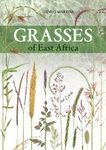About this book
Language: French
In this new release, the eighth of the new series, two families of similar size, Clusiaceae and Malvaceae, are presented.
For the first the taxonomy has changed little with the use of molecular tools and leads us in the forestry sector, with 7 genera and 24 species. The majority, fifteen, belong to the genus Garcinia for which a previous publication presented two species and a new combination. They are often tall trees of the rainforest lowlands, but sometimes also in coastal lowland forest or mountains. The trees are often of interest to the timber industry for industrial or domestic use, while the seeds, from for example Pentadesma or some Garcinia, also have medicinal uses.
For the second family, the Malvaceae, the classical phylogeny has been adhered to, with 7 genera and 23 species. It contains the description of two new species in the genus Hibiscus, which is the largest family with twelve species. Like most other taxa of the family, they are found mainly in open environments, as opposed to Clusiaceae, which are restricted to forests. This group also contains many useful plants, mainly used for fiber and cotton, but also as a vegetables, fruit, leaves, or oilseeds. Identification keys, descriptions, and illustrations allow users to achieve easy recognition of the described species.
Summary in French:
Cette nouvelle parution, la huitième de la nouvelle série, nous présente deux familles de taille voisine, les Clusiaceae et les Malvaceae.
La première reste d’une conception qui a peu changé avec l’utilisation de l’outil moléculaire et elle nous amène dans le domaine forestier, avec 7 genres et 24 espèces dont la majorité, une quinzaine appartient au genre Garcinia pour lequel une publication antérieure a présenté deux espèces et une combinaison nouvelle. Il s’agit souvent d’arbres de grande taille de la forêt dense humide de basse altitude, mais parfois aussi en forêt de plaine littorale ou de montagne. Ce sont aussi souvent des arbres d’intérêt pour la filière bois, d’usage industriel ou domestique, les graines sont aussi utilisées, comme Pentadesma ou certains Garcinia, notons aussi des usages médicinaux.
La seconde famille, grâce à la phylogénie qui en est issue, la place dans une nouvelle configuration, puisqu’on y retrouve les Malvaceae au sens strict, mais aussi les Sterculiaceae, les Tiliaceae et les Bombacaceae. Néanmoins, comme un consensus ne semble pas avoir émergé, cette famille reste ici dans sa délimitation classique, avec 7 genres et 23 espèces. On y trouvera la description de deux espèces nouvelles dans le genre Hibiscus, le plus important de la famille, avec douze espèces, principalement de milieux ouverts, comme d’ailleurs la plupart des autres taxons de la famille, savanes, inselbergs, végétation rudérale ou cultures, s’opposant ainsi aux Clusiaceae restreinte au domaine forestier. Elle compte aussi de nombreuses plantes utiles, principalement pour les fibres, le coton bien sûr, mais aussi comme légume, feuilles et fruits ou les graines oléagineuses. Puissent les clés de détermination, les descriptions et les illustrations permettre aux utilisateurs d’arriver à une reconnaissance aisée des espèces décrites et dans la perspective de l’intérêt porté à la biodiversité, – connaître pour protéger – que cette étude puisse s’inscrire dans les perspectives ouvertes par Rio + 20.
Customer Reviews


























![Flora Vascular de Canarias [The Vascular Flora of the Canary Islands]](http://mediacdn.nhbs.com/jackets/jackets_resizer_medium/26/262479.jpg?height=150&width=102)








![Flore et Végétation de l’Île d’El Hierro, Canaries [Flora and Vegetation of El Hierro, Canary Islands]](http://mediacdn.nhbs.com/jackets/jackets_resizer_medium/25/254343.jpg?height=150&width=103)










